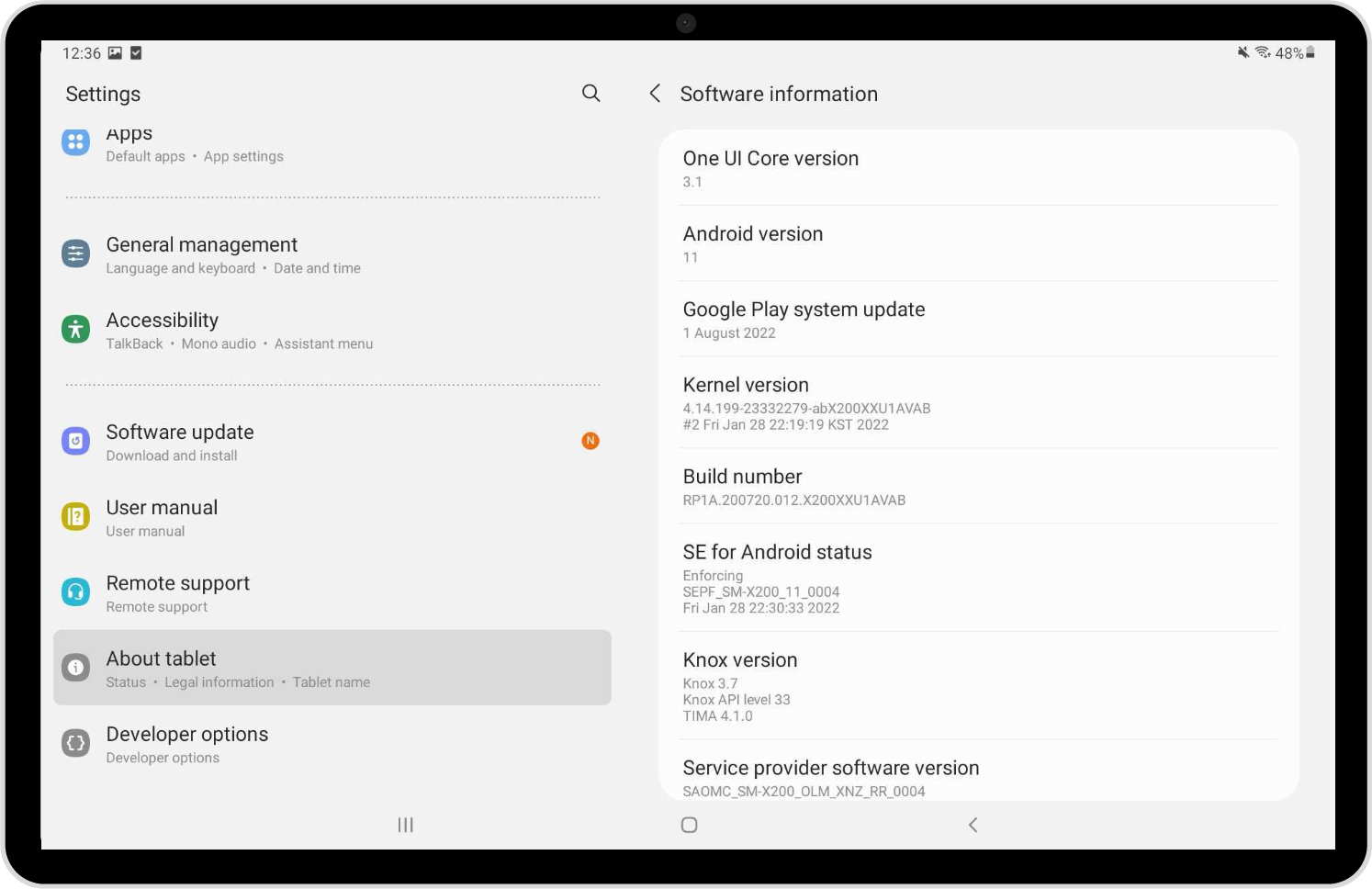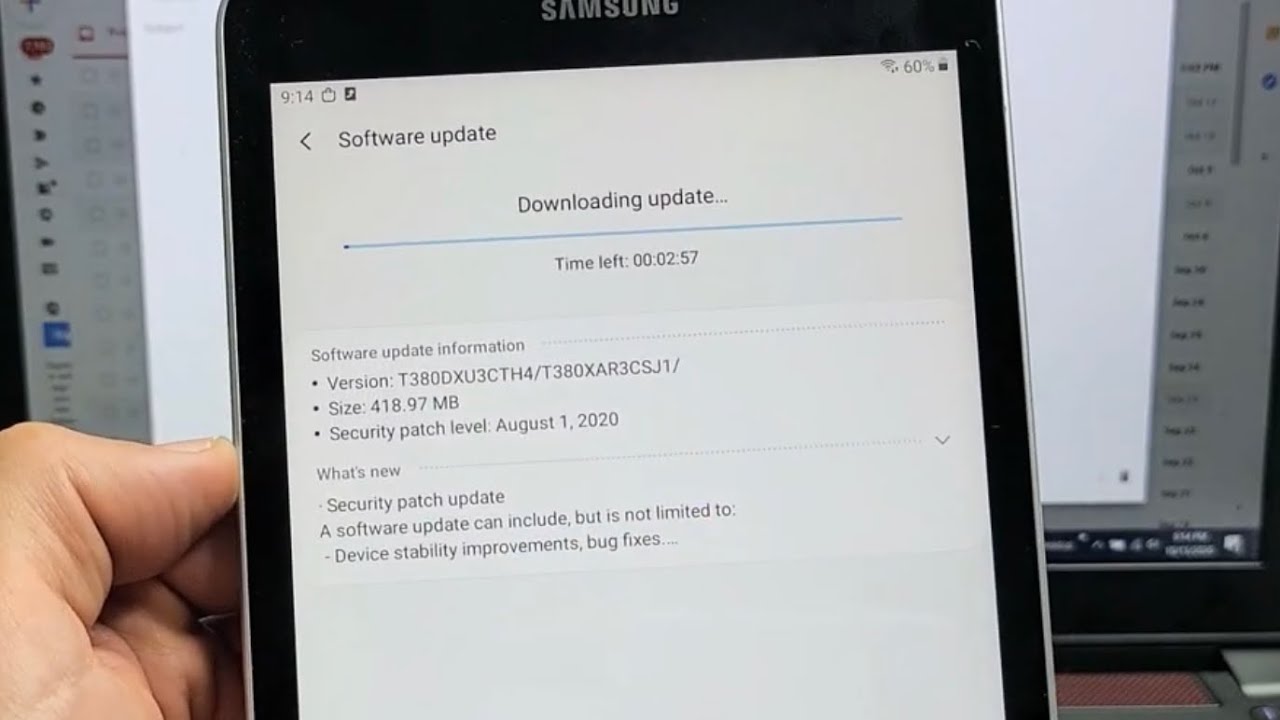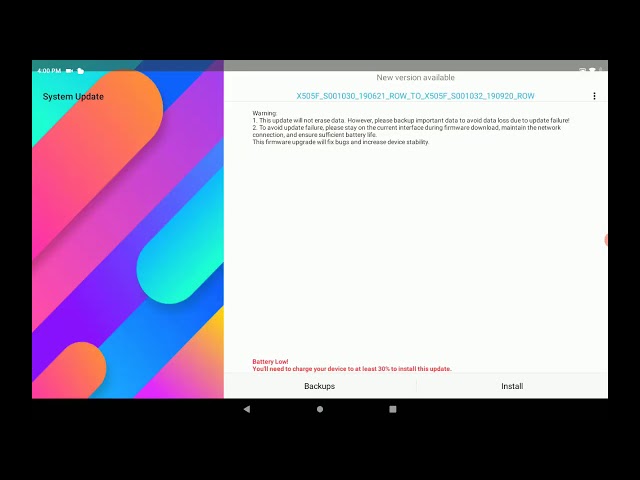Introduction
Android is one of the most popular operating systems for mobile devices, powering millions of smartphones and tablets worldwide. Developed by Google, Android offers a wide range of features and functionalities that have revolutionized the way we use our mobile devices.
With its open-source nature, Android has become a favorite platform for app developers, allowing them to create innovative and diverse applications that cater to the needs and preferences of users. Furthermore, Android offers a seamless integration with numerous Google services, such as Google Maps, Gmail, and Google Assistant, enhancing the overall user experience.
Android is constantly evolving, with new versions being released regularly to introduce improved features, security enhancements, and bug fixes. Each version brings a fresh set of functionalities and optimizations, ensuring that users have access to the latest innovations in the mobile industry.
In this article, we will delve into the world of Android and explore the different versions that have been released over the years. We will take a closer look at the latest version of Android and highlight its notable features. Additionally, we will provide guidance on how to update your Android device to the latest version.
What is Android?
Android is an open-source operating system (OS) designed primarily for mobile devices such as smartphones and tablets. It was developed by Google and is based on the Linux kernel, making it highly flexible and customizable.
Android offers a user-friendly interface that allows users to navigate their devices effortlessly. It supports a wide range of applications and services, making it a versatile platform for both personal and professional use.
One of the key features of Android is its open-source nature, which means that developers can access and modify the source code to create custom versions of the OS. This has resulted in a vast ecosystem of apps and a thriving community of developers constantly working to enhance the Android experience.
Moreover, Android integrates seamlessly with various Google services, including Gmail, Google Maps, Google Drive, and Google Play Store. This integration enables users to access their favorite Google services and download applications from a vast library of apps.
Another benefit of Android is its compatibility with a wide range of devices. It supports various hardware configurations and screen sizes, allowing manufacturers to create devices that cater to different user preferences and budgets.
Furthermore, Android offers advanced features such as multitasking, customizable home screens, advanced notifications, and a rich set of accessibility options. It also supports features like facial recognition, fingerprint scanning, and voice recognition, providing enhanced security options to protect user data.
In summary, Android is a versatile and customizable operating system that powers millions of mobile devices worldwide. Its open-source nature, extensive app ecosystem, and seamless integration with Google services make it a popular choice among users and developers alike.
Android Versions
Since its initial release, Android has gone through various versions, each with its own set of features and improvements. These versions are named after desserts in alphabetical order, with each new version carrying significant advancements in terms of performance, security, and user experience.
Android versions are typically identified by their version number and a corresponding codename. For example, Android 9.0 was codenamed “Pie,” and Android 10 was codenamed “Q.” However, starting with Android 11, Google has abandoned the dessert-themed codenames and is now using numerical representation for naming new versions.
Each Android version brings new features and enhancements, including improved notifications, multitasking capabilities, app permissions, battery optimization, and security patches. It’s worth noting that not all devices receive every Android version, as manufacturers and carriers often determine which updates their devices will receive.
Android versions also come with different minimum system requirements, which can impact device compatibility. Older devices may not be able to support newer Android versions due to hardware limitations.
It is important for users to keep their Android devices up to date with the latest version available to ensure the best performance, security, and access to the latest features and improvements.
Next, let’s take a look at the version history of Android to understand its evolution and the notable features introduced in each release.
Version History
Android has a rich history of version releases, each bringing new features and improvements to the operating system. Here is a brief overview of the notable versions:
- Android 1.0 (September 2008): The first commercial version of Android, it introduced features like the web browser, notifications, and support for Google services such as Gmail and Google Maps.
- Android 1.5 (Cupcake, April 2009): This release introduced on-screen keyboards, video recording, and the ability to upload videos to YouTube.
- Android 1.6 (Donut, September 2009): Donut brought significant improvements to the Android Market (now known as Google Play Store), along with enhanced search functionality.
- Android 2.0/2.1 (Eclair, October 2009): Eclair introduced features like live wallpapers, the Quick Contact feature for easy access to contacts, and support for HTML5 in the browser.
- Android 2.2 (Froyo, May 2010): Froyo introduced features like support for Adobe Flash Player, USB tethering, and the ability to install apps on the SD card.
- Android 2.3 (Gingerbread, December 2010): Gingerbread brought improvements to the user interface, enhanced copy-and-paste functionality, and support for Near Field Communication (NFC) for mobile payments.
- Android 4.0 (Ice Cream Sandwich, October 2011): Ice Cream Sandwich introduced a unified user interface for both smartphones and tablets, along with features like face unlock, resizable widgets, and improved camera functionality.
- Android 4.1/4.2/4.3 (Jelly Bean, July 2012): Jelly Bean brought performance improvements, Google Now integration, expanded notifications, and support for multiple user profiles on tablets.
- Android 4.4 (KitKat, October 2013): KitKat brought a redesigned interface, enhanced performance, and improved memory management. It also introduced the “Ok Google” voice command.
- Android 5.0/5.1 (Lollipop, November 2014): Lollipop brought a more modern design called Material Design, improved battery life, enhancements to notifications, and multi-user support on smartphones.
This is just a glimpse of the different Android versions. The operating system has continued to evolve and introduce new features and improvements with each subsequent release. Now, let’s explore the latest version of Android and its notable features.
Latest Version
The latest version of Android as of [current year] is Android [version number], codenamed [codename]. This version builds upon the success of its predecessors and introduces a range of new features and enhancements that elevate the user experience.
One of the key features of the latest Android version is [feature], which allows users to [description of feature]. This feature improves [specific aspect] and provides users with [benefits]. Additionally, [feature] enhances [specific functionality] and makes it more efficient and user-friendly.
[Latest version] also focuses on enhancing device security. With [security feature], users can protect their devices from [threats]. [Another security feature] adds an extra layer of protection by [description of security feature]. These improved security measures ensure that users’ personal data remains secure and protected.In terms of performance, the latest Android version introduces [performance enhancement]. This optimizes system resources and enhances overall device speed and responsiveness. Users can expect faster app launches, smoother multitasking, and improved system stability.
[Latest version] also brings several user interface improvements to enhance usability and visual appeal. The revamped [UI element] provides a refreshed and intuitive user interface, allowing users to navigate their devices more seamlessly. Additionally, [UI enhancement] enhances the overall visual experience and provides a more immersive interface.Furthermore, [latest version] introduces new features and improvements to [native app/service]. Users can now enjoy enhanced [feature of native app] with added functionalities and improved performance. [Another improvement] allows users to [description] and makes it easier to [specific action]. These updates enhance the overall user experience and make everyday tasks more convenient.
It’s important to note that the availability of the latest Android version may vary depending on device manufacturers and carriers. Some devices may receive the update shortly after its release, while others may take longer. To check if your device is eligible for the update, navigate to the “Settings” menu, select “System Updates,” and follow the prompts to check for any available updates.
Updating to the latest Android version is highly recommended as it not only provides access to new features and improvements but also ensures that your device is up to date with the latest security patches.
In the next section, we will discuss how to update your Android device to the latest version.
Features of Android [Latest Version]
The latest version of Android, [latest version name], comes packed with a host of exciting features and improvements that enhance the user experience and provide greater functionality. Here are some noteworthy features of [latest version]:
- [Feature 1]: This feature allows users to [description of feature]. It offers [benefits] and enhances [specific aspect]. Users can now [perform specific action] more easily and efficiently.
- [Feature 2]: With this feature, Android [latest version] introduces [description of feature]. It enables users to [benefits of feature]. This feature enhances [specific functionality] and provides a seamless user experience.
- [Feature 3]: [Latest version] focuses on improving device security, and this feature plays a crucial role in achieving that. It provides [description of security feature] and ensures that users’ personal data remains secure and protected.
- [Feature 4]: Android [latest version] introduces a revamped [UI element], giving the user interface a fresh and modern look. This enhances the overall user experience by offering an intuitive and visually appealing interface.
- [Feature 5]: Another notable feature of [latest version] is the enhanced [native app/service]. It offers [improvement to native app/service] and provides users with [additional functionalities]. Users can enjoy a more seamless and efficient experience when using [native app/service].
- [Feature 6]: Google has also focused on improving performance in [latest version]. This version introduces [performance enhancement], resulting in faster app launches, smoother multitasking, and improved overall system stability.
- [Feature 7]: [Latest version] places importance on connectivity, and this feature demonstrates just that. It offers [description of connectivity feature] and allows users to [specific action]. This enhances connectivity options and makes it easier to share and transfer data.
- [Feature 8]: Android [latest version] also emphasizes productivity, and this feature proves it. It introduces [description of productivity feature], enabling users to [benefits of productivity feature]. This makes it easier and more efficient to [specific action].
- [Feature 9]: Battery life is often a concern for smartphone users, and [latest version] addresses this issue with [battery optimization feature]. This feature optimizes battery usage, extending battery life and ensuring users can make the most out of their devices.
- [Feature 10]: [Latest version] brings improvements to [specific app/service]. It introduces [description of improvement], enhancing the functionality, and providing a more seamless user experience when using [specific app/service].
These are just a few of the many features that Android [latest version] offers. It is, without a doubt, an exciting update that brings enhanced functionality, improved security, and a more seamless user experience.
In the next section, we will explore how to update your Android device to the latest version, ensuring that you can enjoy these features and enhancements.
How to Update to the Latest Version of Android
Updating your Android device to the latest version is essential to ensure that you have access to the latest features, performance improvements, and security patches. Here are the general steps to update your Android device:
- Check for updates: Go to the “Settings” menu on your device and look for the “System Updates” or “Software Updates” option. Tap on it to check for any available updates. If a new version is available, follow the prompts to download and install it. Note that the location of the update option may vary depending on your device’s manufacturer and the version of Android you are currently running.
- Backup your data: Before proceeding with the update, it is always recommended to back up your important data, such as contacts, photos, and documents. You can use cloud storage services, such as Google Drive or Dropbox, or connect your device to a computer and transfer the data manually.
- Ensure sufficient storage: Updating to a new Android version may require a significant amount of storage space. Make sure that your device has enough free space to accommodate the update. If necessary, delete unnecessary files or move them to an external storage device.
- Connect to a stable Wi-Fi network: To avoid any interruptions during the update process and to minimize data usage, connect your device to a stable Wi-Fi network. This ensures a reliable and faster download of the update package.
- Plug in your device: It is recommended to connect your device to a power source or ensure that it has sufficient battery charge before initiating the update. This prevents the device from running out of power during the update process, which can lead to potential issues.
- Follow the on-screen instructions: Once you have checked for updates and met the necessary requirements, follow the on-screen instructions to download and install the latest Android version. The process may take some time, and your device may restart multiple times during the update. It is important not to interrupt the update process until it is completed.
Remember that the availability of the latest Android version may vary depending on your device’s manufacturer, carrier, and region. Some devices may receive updates shortly after their release, while others may take longer. Patience is key, and it is recommended to regularly check for updates to ensure you don’t miss out on the latest version.
Updating your Android device is crucial to stay up to date with the latest features, security enhancements, and performance improvements. It allows you to make the most out of your device and enjoy a seamless user experience.
With the latest version of Android installed on your device, you can take advantage of all the new features and improvements introduced by Google, ensuring that you are at the forefront of the Android experience.
Conclusion
Android is a powerful and versatile operating system that continues to shape the mobile device landscape. With its open-source nature and wide range of features, Android has become the go-to choice for millions of users worldwide.
In this article, we delved into the world of Android and explored the different versions that have been released over the years. We discussed the latest version of Android, highlighting its notable features and improvements. We also provided guidance on how to update your Android device to the latest version, ensuring that you can enjoy the latest advancements in the Android ecosystem.
Android’s constant evolution ensures that users have access to the latest innovations, improved performance, and enhanced security. It’s important to regularly check for updates and keep your device up to date to take full advantage of these benefits.
Whether you’re using Android for personal or professional reasons, the operating system offers a vast array of apps, seamless integration with Google services, and a customizable experience that caters to your needs and preferences.
As Android continues to evolve, we can expect even more exciting features and advancements in the future. So, stay tuned, explore the latest versions, and dive into the world of Android to make the most out of your mobile device.

























